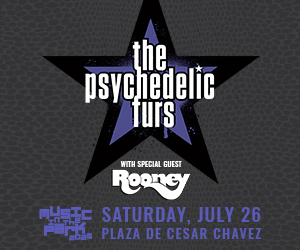People don’t know themselves,” says Brian Nosek, “as well as it feels like we know ourselves.”
Speaking from the psychology department at the University of Virginia, Nosek should know. He’s developed an online test that’s caused people around the world to shake their fists, bang the keyboard and shudder in resentment when presented with results that go against the very core of their values. Nosek’s research never comes right out and asks, although there’s nonetheless an underlying question at play.
What if, deep down, we are all racist?
Enter Project Implicit, designers of the online Implicit Association Test (IAT), hosted at Harvard University, which aims to dig beneath the surface of the mind by measuring automatic responses to images quickly flashed on the screen. Designed by Anthony Greenwald, a psychology professor at the University of Washington, the IAT was co-developed with Nosek, a co-principal investigator of Project Implicit.
Harvard’s website contains 14 different IATs for biases regarding weight, age, sexuality and disability, but by far, the race test is the most popular—and provocative. At the start of the IAT, test takers answer questions about their feelings toward white and black people, along with some general inquiries to the person’s character—how impulsive they may see themselves, how they feel about human equality. After a basic warm-up sorting faces and words, the real task begins—sorting white and black faces into groups of “good” and “bad” along with words like “nasty,” “glorious,” “hurt,” “love,” “failure” and “happy.”
Taking the test can be extremely maddening. At times, it forces the testee to lump black faces with words like “evil” and “horrible,” destroying the honed alignment of what hopefully are our basic humanitarian values. But what we think may be a difficult association to make turns out to be easier than we realize; the Project Implicit website keeps a tally of split-second time results, and most respondents react quicker while sorting black faces with “awful” and “agony” than with “pleasure” and “laughter.”
In other words, everyone is racist. Right?
Not at all, says Nosek. “Racism is explicit,” he says. “Racism is me saying, ‘I don’t like this group because I think they’re rotten and ugly and smelly.’ That’s not what the IAT measures; it’s not telling us what the truth is in someone’s mind.”
What it does measure is mental association and “automatic preference,” the term used in test results (i.e., “You have a moderate automatic preference for European Americans over African Americans”). No one likes this terminology very much, but Nosek is clear about the subconscious definition of “automatic preference” as used in the test, citing his own testing experience as an example.
“I hold the idea of treating everyone as individuals and not by the color of their skin,” he says, “and nonetheless, it’s easier for me to group ‘black’ with ‘bad’ and ‘white’ with ‘good’ than the other way around. That suggests something very surprising and humbling to me; one is that I don’t have complete control over my mind. There’s stuff in my mind that exists there without my permission, without necessarily my desiring it and without my necessarily being able to control it.
“And so what that introduces,” he continues, “is that I may be behaving in ways that are inconsistent with my values without even really recognizing it. That is something that we don’t like to think about as humans. We want to think we’re in control of our minds and our behavior.”
In other words, the test results really aren’t as personal as we may think. While our conscious mind processes the relationships among stimuli it receives and scrutinizes their worth, our implicit mind—the side the IAT aims to probe—merely records its environment, making the test more of a barometer of the world around us than of our true makeup.
Still, many people feel that they’re accused of racism when their test result denotes a moderate automatic preference for white people over black people or vice versa, and almost all of them have theories about the IAT’s flaws.
“My biggest problem,” writes one online user, “is that the real response they’re measuring is how quickly they can get me to associate positive terms with my right hand and negative terms with my left, then how well I cope when they mix things up. I see very little here to persuade me that they’ve accurately measured what they claim to have measured.”
Nosek himself thought of this after he first took the IAT, and after investigation determined that the switch-up only provides for a 3 percent effect on test performance. “It feels like it must be the whole explanation when we do it,” he says, “but it actually has a very small impact, and we’ve added some procedural modifications to reduce that impact even further.”
Nosek himself welcomes debate on the IAT (it gets “everyday people to think like scientists,” he says), but more important, he says, is the communication and self-awareness the test can inspire. Whatever one may think of the IAT test, it nonetheless serves as a catalyst for us to face our own biases.
“There’s a lot of interesting social issues that we want to wrestle with as a society and also individually,” Nosek says. “This test can be a vehicle for promoting that discussion, and I don’t think conversations like that are ever harmful.”
The question remains: are we all racist?
The Project Implicit tests can be found online at https://implicit.harvard.edu.implicit.
















